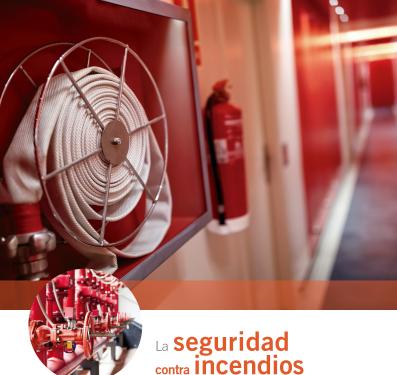

Dealing With Fire Protection Equipment After A Natural Disaster

Recent disasters in Spain such as the Filomena storm, the Granada earth tremors and cyclogenesis events have affected buildings and caused walls and roofs to collapse, damaging the fire protection systems at many business premises. How can we restore fire safety at the affected premises?
Natural disasters can damage fire protection systems in all types of facilities, including industrial and business premises, hospitals, hotels, and university campuses, explains Antonio Tortosa, Vice President of TECNIFUEGO (Spanish Association of Fire Protection Companies). He explains that after a disaster of this kind, “it’s essential to do a complete survey and check all the installed equipment, including detectors, sprinklers, and fire extinguishers, and check the compartmentalisation, sectorisation, structural protection, and fire reaction of materials, and any other necessary measures.”
After these checks, it is essential to “rectify as quickly as possible any damage to installations and equipment that prevents employees and anyone else safely restarting work in each building.” During these checks, “it’s important to replace any damaged materials as soon as possible, and check that the installations are working properly again.”
Tortosa also highlights the importance of public-private collaboration to prevent and rectify any damage caused by a natural disaster. He cites the example of his association’s participation in developing regulations and drawing up maintenance guides for protection systems.
Cold Waves
Cold waves are a growing hazard for fire protection equipment (FPE), explains Victor Manuel Fernandez de la Cotera, Head of the Fire Service in Fuenlabrada in the Madrid region, and Secretary of APTB (Professional Association of Technician Firefighters). In these situations, “in any industry, it’s vital that personnel specialised in maintaining FPE installations check them before work starts again, to ensure that it’s working correctly and that in case of fire they’re a hundred per cent available.”
Fernández de la Cotera says that law 17/2015 of 9th July, on the National Civil Protection System, requires Special Plans for adverse weather, so “a new Basic Standard is being drawn up, with implementation guidelines.”
Mitigating Damage
Fire prevention requires not only adequate investment but also continuous care. Rafael Sarasola is the Coordinator of TECNIFUEGO’s Passive Protection Installation and Maintenance Committee. He warns that “FPE installations and their maintenance should only be undertaken by specialists who have the expert knowledge, proper training and length of experience, to ensure that equipment is properly designed, installed and maintained.”
Alfonso Manrique, Deputy Manager for Valuations with the Insurance Compensation Consortium, notes that “calculations for design and installation of fire protection systems must consider natural disaster risk. “That,” he concludes, “can largely mitigate damage in such events.” But he also warns that “most businesses have installations like FPE systems in places like basements and pits, so they’re below ground level and vulnerable to flooding. They should be installed somewhere higher.”




